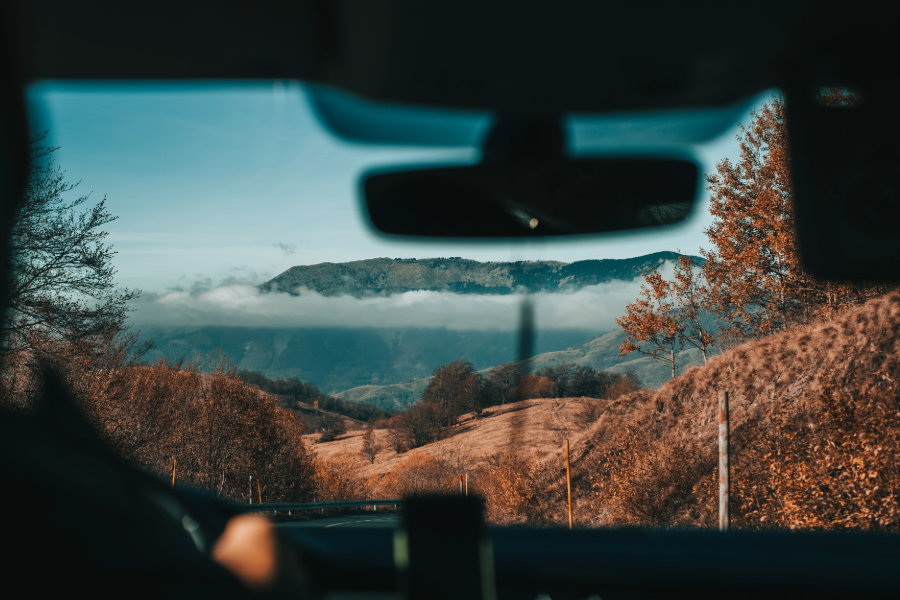
As the temperatures drop and the landscapes transform, cold-weather camping offers a unique and serene way to enjoy the great outdoors. Let’s explore everything you need to know to prepare for a successful and comfortable winter RV adventure. From essential gear to heating solutions we’ve got you covered. Whether you’re chasing snow-covered mountains or seeking a cozy retreat, our tips will help you make the most of your frosty camping experience.
1. Heating Solutions
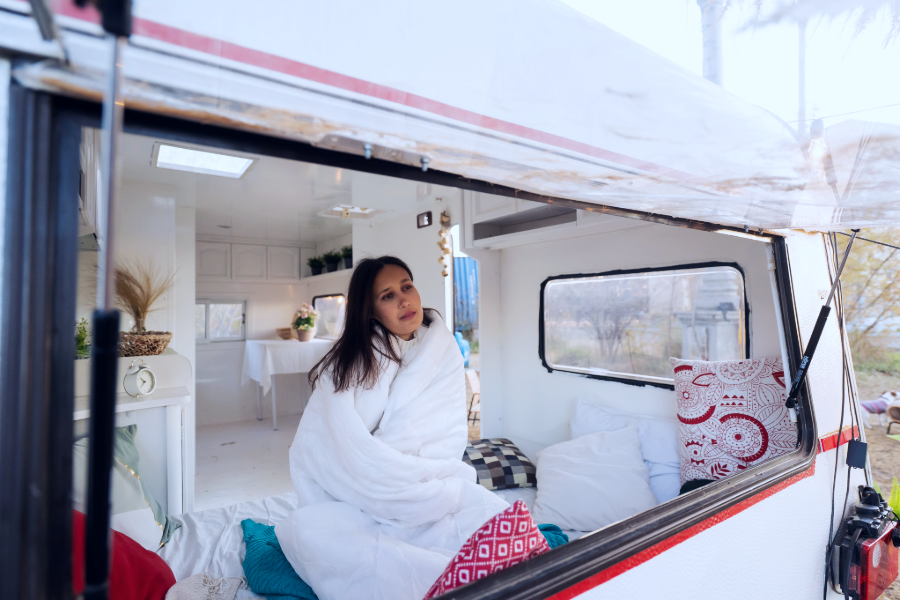
Propane Furnace
- How It Works: Most RVs come equipped with a built-in propane furnace. These furnaces are designed to heat the entire RV by circulating warm air through ducts.
- Pros: Efficient at heating large spaces quickly, and they are designed specifically for RV use.
- Cons: They can consume a lot of propane and may drain the RV’s battery due to the fan required for air circulation. They can also be noisy.
Electric Space Heaters
- How It Works: Plug-in space heaters are portable devices that can be placed wherever you need additional warmth.
- Pros: They’re easy to use, cost-effective, and provide targeted heat. No propane consumption means they’re ideal when connected to shore power.
- Cons: Can be a fire hazard if not used carefully. They also draw a lot of power, which might trip the RV’s electrical system if not managed properly.
Catalytic Heaters
- How It Works: Catalytic heaters use a chemical reaction to generate heat without an open flame, making them safe for indoor use in RVs.
- Pros: Highly efficient, using less propane than a standard furnace. They’re quiet and do not require electricity to operate.
- Cons: They don’t circulate air, so the heat may not be evenly distributed. Proper ventilation is required to avoid carbon monoxide buildup.
Heat Pumps
- How It Works: Heat pumps, often integrated into an RV’s air conditioning system, can provide both cooling and heating by reversing the flow of refrigerant.
- Pros: Efficient at heating when the outside temperature is above freezing. They’re electric, so they don’t use propane.
- Cons: Not effective in very cold temperatures (below 40°F). They can also draw significant power, which is only viable when connected to shore power.
Electric Blankets and Heated Mattress Pads
- How It Works: These are plug-in devices that provide localized warmth directly to your bed.
Tips for Maximizing Heating Efficiency:
- Insulate Windows and Doors: Use thermal curtains, weather stripping, and window insulation kits to reduce heat loss.
- Use Vent Covers: Insulated vent covers can prevent heat from escaping through ceiling vents.
- Close Off Unused Areas: Close doors to rooms you’re not using to concentrate heat where you need it.
- Regular Maintenance: Ensure your heating systems are regularly serviced and in good working order to maximize efficiency and safety.
- RV Skirting: Insulated skirting around the base of your RV helps prevent cold air from entering underneath, protecting pipes and tanks from freezing.
2.Ventilation & Condensation Management
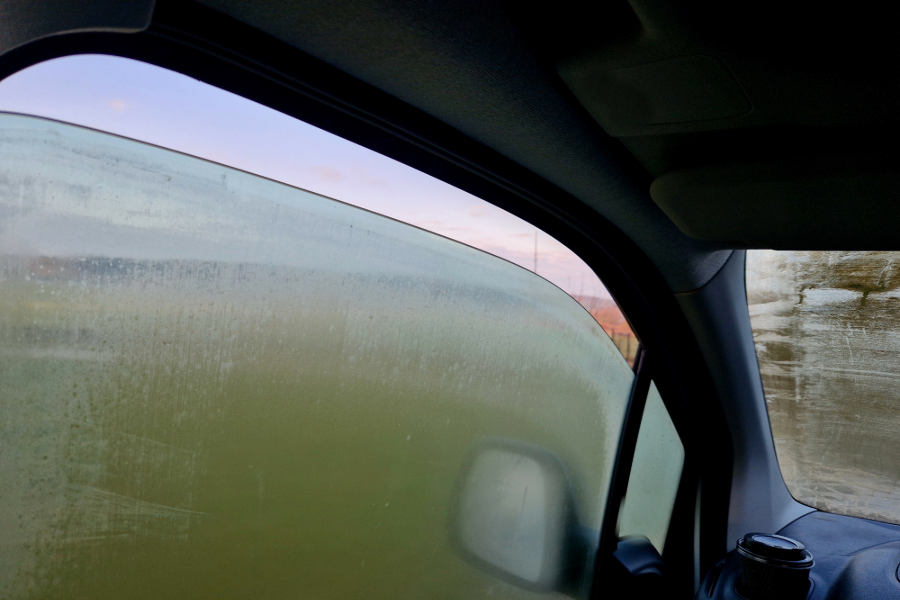
Proper ventilation in your RV is crucial to prevent condensation buildup, which can lead to mold, mildew, and damage to your interior. When warm air inside the RV meets cold surfaces, moisture condenses, especially in colder weather. Without adequate airflow, this moisture can accumulate, leading to unhealthy living conditions and potential structural issues.
Simple Solutions for Better Ventilation:
- Use Vent Fans: Run roof vent fans, even in winter, to circulate air and reduce humidity.
- Open Windows Slightly: Crack windows or vents, especially when cooking or showering, to let moist air escape.
- Install Dehumidifiers: Use portable dehumidifiers or moisture absorbers to actively remove excess moisture from the air.
- Ventilate Storage Areas: Ensure cabinets and closets have some ventilation to prevent moisture from getting trapped.
3.Winter Ready Camping Gear
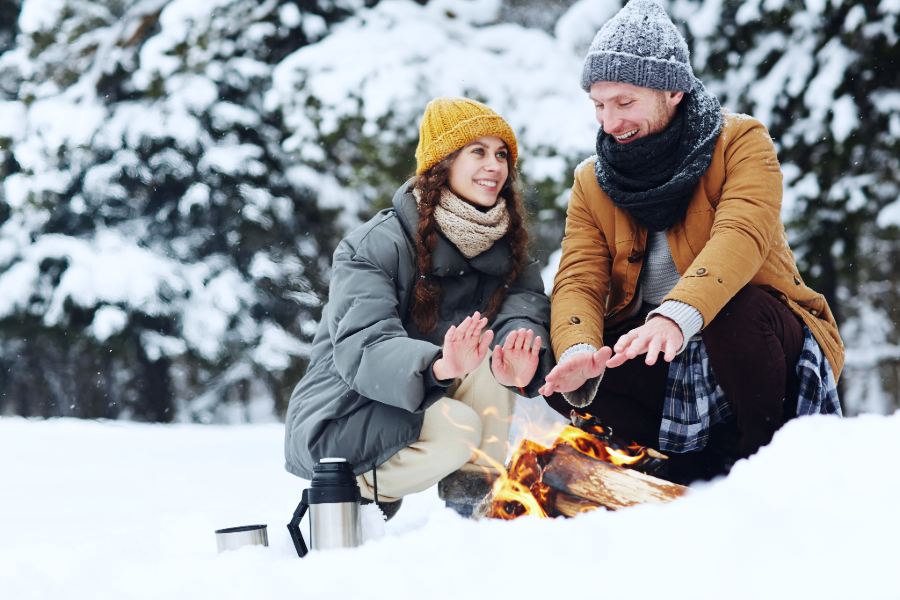
When preparing for winter camping in your RV, having the right gear is essential to ensure safety, comfort, and warmth. Here’s a list of necessary winter-ready camping gear:
Insulated Clothing and Footwear
- Thermal Base Layers: Moisture-wicking and insulated base layers keep you warm and dry.
- Winter Jackets and Pants: Waterproof and windproof outer layers are crucial for protection against the elements.
- Insulated Boots: Waterproof boots with good insulation and non-slip soles are essential for walking in snow and ice.
- Warm Hats, Gloves, and Socks: Wool or synthetic materials are best for retaining heat.
Snow and Ice Tools
- Snow Shovel: A compact, durable shovel for clearing snow around your RV and campsite.
- Ice Scraper: Essential for removing ice from windows and windshields.
- Traction Mats or Sand: Helps your RV gain traction on slippery surfaces, especially if you get stuck in snow or ice.
Emergency Preparedness Gear
- First Aid Kit: A comprehensive first aid kit with supplies tailored for cold-weather injuries like frostbite.
- Emergency Blankets: Lightweight, space-saving blankets that provide critical warmth in emergencies.
- Portable Jump Starter: In case your RV or vehicle battery dies in the cold, a portable jump starter can save the day.
- Fire Extinguisher: Always have a fire extinguisher easily accessible, especially when using propane heaters or stoves.
Entertainment and Comfort
- Cozy Blankets and Throws: Fleece or wool blankets for added warmth while lounging.
- Board Games or Books: Cold evenings are perfect for indoor activities that don’t require electricity.
- Hot Water Bottle: An old-school but effective way to stay warm at night.
Lighting and Power
- Headlamp or Flashlight: High-quality, rechargeable headlamps or flashlights for navigating in the dark.
- Backup Batteries: Extra batteries or portable power banks to keep devices charged.
- Solar Charger: A solar panel charger can be useful for keeping batteries topped up, even in winter.
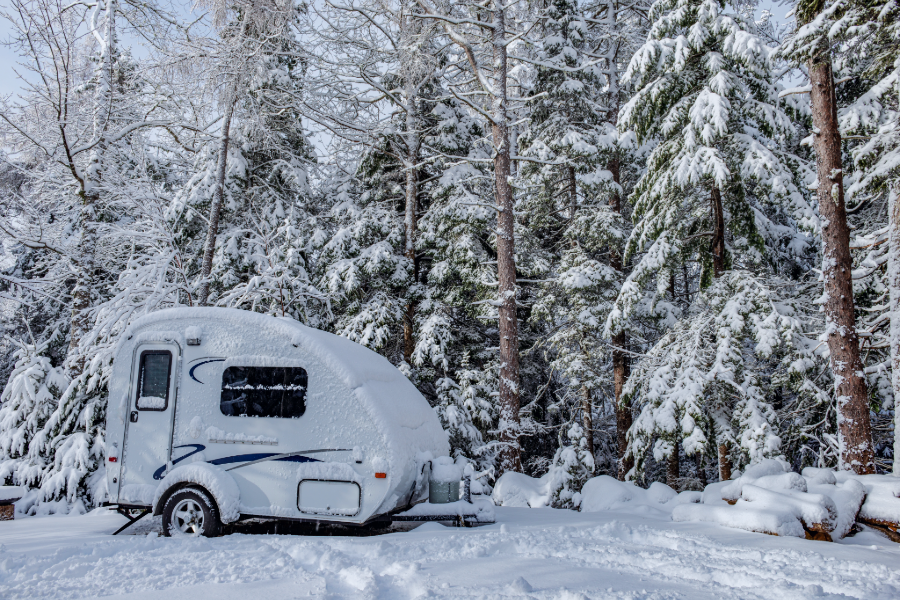
With the right preparation and a few key pieces of gear, cold-weather RV camping can be a rewarding and cozy experience. Embrace the winter season by exploring new destinations, enjoying the serenity of less crowded campgrounds, and creating warm, memorable moments in your RV. Remember, staying safe and comfortable is all about being prepared, so pack wisely, winterize your RV, and make the most of your chilly adventures. Here’s to a season of warm fires, snowy landscapes, and unforgettable winter journeys in your RV!
